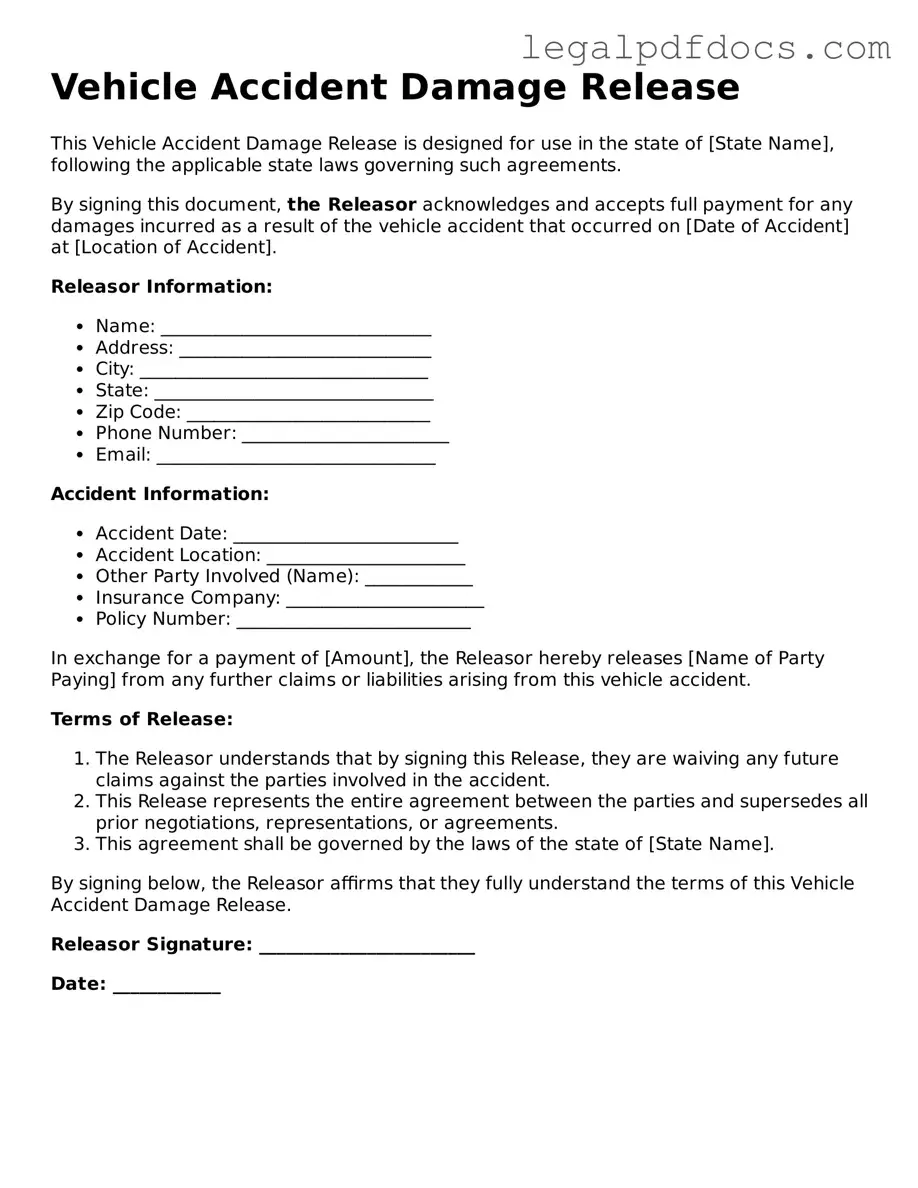Vehicle Accident Damage Release Template
The Vehicle Accident Damage Release form is a document that allows individuals involved in a vehicle accident to formally release any claims against the other party for damages. This form is essential for ensuring that all parties agree on the resolution of damages and can help prevent future disputes. To streamline your process, fill out the form by clicking the button below.
Open Vehicle Accident Damage Release Editor Here
